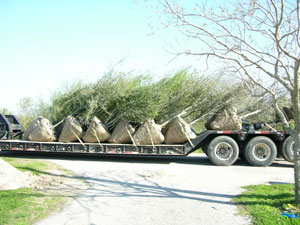 The shores of the Gulf of Mexico provide critical stopover habitat for the 296 landbird species that migrate north each spring to breeding grounds in the US and Canada, then fly south to spend the bulk of the year in the Southern Hemisphere. Ornithologists have long known that coastal Gulf of Mexico habitat is critical for migrating nearctic-neotropical birds. However, before the early 1990’s most bird conservation across the US focused only on loss of breeding habitat, or threats on wintering grounds in the tropics. A nearctic-neotropical migrant spends a full one-third of its lifecycle not on breeding or wintering grounds, but in migration. A general lack of understanding of the needs of birds during migration represented a huge gap in conservation efforts. Pioneering work on all aspects of migration by Doctor’s George Lowery, Sidney Gauthreaux, Frank Moore, Wylie Barrow, and others demonstrated the many variables, and hazards, faced by migrants. The work of these researchers also illustrated the importance of stopover habitats used during migration. In fact, many of these research scientists, along with two premier conservation organizations, Houston Audubon Society, and The Nature Conservancy were the founders of the Gulf Coast Bird Observatory who in 1992 envisioned an organization dedicated solely to the study and conservation of birds and their habitat in and around the Gulf of Mexico. Thus today, this remains our core mission, although we have expanded some of our work to Latin America.
The shores of the Gulf of Mexico provide critical stopover habitat for the 296 landbird species that migrate north each spring to breeding grounds in the US and Canada, then fly south to spend the bulk of the year in the Southern Hemisphere. Ornithologists have long known that coastal Gulf of Mexico habitat is critical for migrating nearctic-neotropical birds. However, before the early 1990’s most bird conservation across the US focused only on loss of breeding habitat, or threats on wintering grounds in the tropics. A nearctic-neotropical migrant spends a full one-third of its lifecycle not on breeding or wintering grounds, but in migration. A general lack of understanding of the needs of birds during migration represented a huge gap in conservation efforts. Pioneering work on all aspects of migration by Doctor’s George Lowery, Sidney Gauthreaux, Frank Moore, Wylie Barrow, and others demonstrated the many variables, and hazards, faced by migrants. The work of these researchers also illustrated the importance of stopover habitats used during migration. In fact, many of these research scientists, along with two premier conservation organizations, Houston Audubon Society, and The Nature Conservancy were the founders of the Gulf Coast Bird Observatory who in 1992 envisioned an organization dedicated solely to the study and conservation of birds and their habitat in and around the Gulf of Mexico. Thus today, this remains our core mission, although we have expanded some of our work to Latin America.
With our land conservation programs, we raise funds to help our partners acquire important migratory stop-over property all along the Gulf of Mexico in the US and Mexico, as well as tropical wintering habitat throughout Latin America. Over the years we have established a network of conservation organizations for coordinated research and conservation practices for migratory birds.
Some important land acquisitions aided by GCBO include the initial purchase of the internationally-known sites at High Island, Texas (along with the Houston Audubon Society), the Joan and Scott Holt Paradise Pond Birding Center in Port Aransas, Texas, several critical parcels of Columbia Bottomlands forest in Brazoria County, Texas, and the Fischer Wildlife Sanctuary (with the Orleans Audubon Society) in the critical Pearl River Basin of Louisiana, just to name a few. GCBO also worked with The Nature Conservancy on the acquisition of additional premier remnant oak forest on the barrier island of Grand Isle, Louisiana. GCBO has acquired our own property on the island of Quintana, Texas, which is an area of known importance as a stopover site for trans-Gulf migrants. In addition, in the past we have worked with a number of private landowners who wish to conserve their land for future generations. Our more currant Land Acquisition Fund program, and Tropical Forest Forever Fund program, have so far granted over 2 million US dollars to help purchase avian conservation properties in the US and Latin America.

